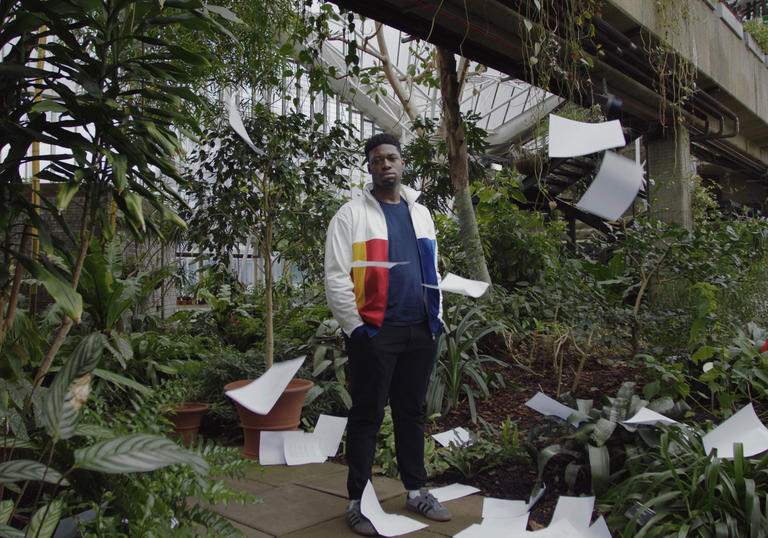Throughout 2018, we’re working with The Smalls to present twelve new short films directed by emerging filmmakers in response to the themes explored by The Art of Change.
This month, Bertil Nilsson presents ‘Finding your voice’, an artistic documentary featuring three of our Barbican Young Creatives as they share how the arts have helped them define their creativity and use their voice.
We spoke to Bertil to find out about the process behind creating the film.
How does your film respond to this month’s theme – Finding your voice?
Recently I have been thinking quite a lot about this in relation to my own work and how I want to develop it. In the past, I’ve been creating almost exclusively in collaboration with circus artists and dancers, to the point where it’s become a defining element of my work. I love what I do with physical movers, but I’ve come to a point where I need to grow beyond that. It’s been a challenging, and rewarding, process to figure out what that path looks like and delve deeper into what I’m really wanting to express.
I was interested in exploring the experience of young artists who are going through that process of figuring out what they want to say, and how to do that. Cleo, Georgia and Leon had so many insightful things to share, especially their personal stories of going through those challenges we all face as artists – false starts, rejection and finding the right outlet. I had naively thought I would be able to share some experience with them, but really it was more of a learning experience for me.
In the end, the film reflects the theme both in their stories, but also in how it was made. I wanted to explore a different approach to filmmaking so I chose to work with stillness of the subjects taking inspiration from portrait photography. Also I gave a nod to my typical approach to photography – subject always centered, using a squarish format and working exclusively with natural light.
I had naively thought I would be able to share some experience with them, but really it was more of a learning experience for me
Can you explain the process behind the making of your film?
The Barbican was able to put me together with the three young artists who had previously participated in one of the Barbican Young Creatives programmes. Georgia from the Young Visual Arts Group, Leon from the Young Reviewers and Cleo who had done both.
My idea was always to let them dictate the direction the film would take, so the first thing we did was all get together and have a group conversation on the topic of finding your voice and how art can effect change. This was one of the highlights of making the film and really everything in the film came out of that conversation.
Because the Barbican was bringing us all together – it made sense to set the film there, also it’s probably no secret that I love it as a location as it has featured many times in my work previously. We were lucky enough to get to have a day of playing around in the Conservatory which was another highlight – it’s such an amazing space and having it to yourself and being able to do (almost) anything we wanted was definitely a privilege.
I then recorded the interviews with each of them separately, which was another opportunity to have a one-on-one conversation with these amazing young artists.
The one thing that didn’t work out exactly how I planned was I had originally been wanting to have the artists featured collaborating on the actual filmmaking and form of the film. It proved hard to find a good way to make that a practical reality within the constraints, but we did collaborate more on what was going in front of the camera.
Do you think art really can be a vehicle for change?
Anything that allows communication and expression can be a vehicle for change. Art is no different. The power of art and creativity is to do it in an indirect and unexpected way, raising questions about us and the world we live in.
It was inspiring to hear how positive Georgia, Cleo and Leon were about the potential for art to have an impact and also how they really have the intention of effecting positive through their work.
Anything that allows communication and expression can be a vehicle for change. Art is no different.
About Bertil Nilsson
Bertil is a director and visual artist from Sweden, living in London. He has published two books of photography and exhibited internationally with solo shows in UK, the Netherlands, Canada and the US. His films have been featured on NOWNESS and Vimeo Staff Picks, and his photography in Kinfolk, Huffington Post and Creative Review.
bertil.uk @bertilnilsson
Next month, our theme is ‘Climate Change'
Subscribe to the Barbican YouTube channel for a new video every Friday.

